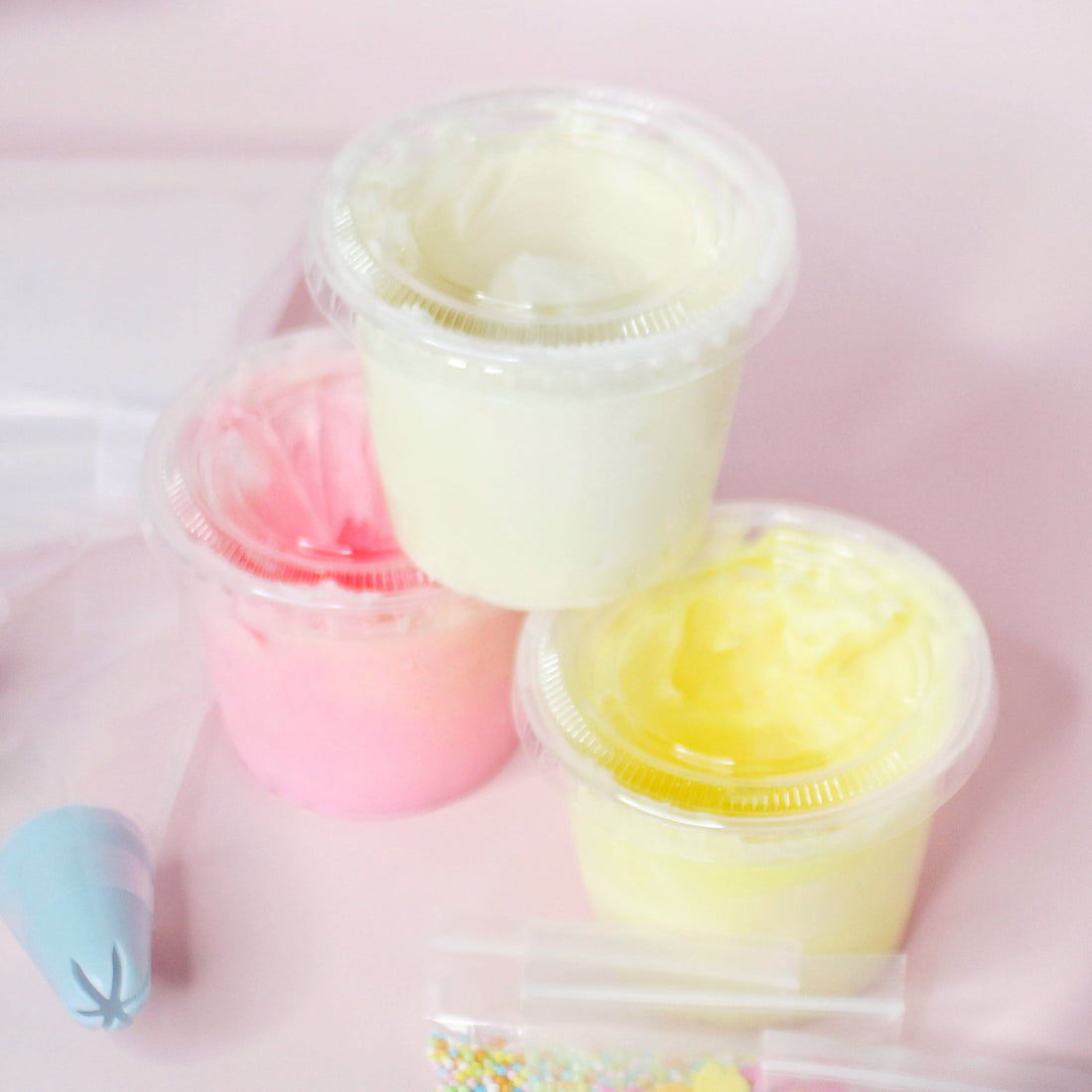
5 Cake Baking Mistakes New Bakers Make (And How to Avoid Them Like a Pro)
Avoid these common cake fails and level up your skills from beginner to confident cake artist.
Ever pulled a cake out of the oven only to find it sunken, dry, or stuck to the pan?
We’ve all been there. Whether you’re baking your very first birthday cake or dreaming of launching your own cake business, mistakes in the beginning can be frustrating but totally fixable.
Cake baking is part science, part art, and all about the details. One small misstep can turn a dreamy vanilla layer cake into a cracked, dry mess. But with the right tips and techniques, you’ll save yourself time, ingredients, and unnecessary stress.
In this post, I’m sharing 5 of the most common cake-baking mistakes beginners make and how to avoid them so your cakes come out fluffy, flavorful, and ready for frosting every single time.
1. Not Prepping Your Pans Correctly
🧁 Why This Mistake Happens
You followed the recipe, your batter looks perfect, but when you try to flip the cake out and disaster. It sticks, tears, or crumbles. This happens because the pan wasn’t prepped properly.
✅ How to Avoid It
The key is to grease and line your cake pans. Here's how to do it right:
-
Use a thin layer of shortening, butter, or baking spray on the bottom and sides of your pan.
-
Line the bottom with a circle of parchment paper, especially for layered cakes.
-
Lightly dust with flour if you're using butter or oil to grease.
Pro Tip:
Skip the wax paper. Only parchment is oven-safe. And if you’re using intricate pans like bundt pans, a baking spray with flour works best for those nooks and crannies.
2. Overfilling or Underfilling the Pan
🧁 Why This Mistake Happens
New bakers often pour all the batter into one pan, hoping for a thick, bakery-style cake. But when you overfill, your cake can overflow, dome too high, or sink in the middle. Underfilling can leave you with thin, dry layers.
✅ How to Avoid It
Only fill your pans about halfway to two-thirds full. If you have extra batter, bake it in a cupcake tin for a taste test or snack.
Pro Tip:
If you bake cakes regularly, invest in cake strips. Wrap them around the pans to help cakes bake flat and evenly.
3. Incorrect Oven Temperature (Or Opening the Oven Door Too Much)
🧁 Why This Mistake Happens
Most ovens aren’t perfectly calibrated. If the temperature is off, your cake can rise too quickly and collapse or take forever to cook and dry out. And opening the oven door? That causes temperature drops that mess with the structure of your cake.
✅ How to Avoid It
-
Always preheat your oven for at least 15 to 20 minutes.
-
Use an oven thermometer to check if your oven runs hot or cool.
-
Don’t open the door in the first 75 percent of bake time unless absolutely necessary.
Pro Tip:
If your cake browns too fast on top but isn’t fully baked inside, cover it with foil and continue baking.
4. Not Leveling or Cooling Cakes Properly Before Frosting
🧁 Why This Mistake Happens
You’ve baked your cake layers and you’re ready to decorate. But you skip leveling the tops or try to frost while the cake’s still warm. The result is melting frosting, sliding layers, and uneven stacks.
✅ How to Avoid It
-
Let your cakes cool in the pan for 10 to 15 minutes, then flip them out onto a wire rack.
-
Wait until they’re completely cool before leveling or frosting. This usually takes 1 to 2 hours.
-
Use a serrated knife or cake leveler to trim domed tops and get perfectly flat layers.
Pro Tip:
For extra smooth decorating, wrap cooled layers in plastic wrap and chill them for at least 1 hour or freeze for 30 minutes. Cold cake layers are much easier to frost cleanly.
5. Ignoring Ingredient Temperatures
🧁 Why This Mistake Happens
Butter straight from the fridge? Eggs still cold? Adding ingredients at the wrong temperature can throw off your batter’s texture and affect the rise of your cake.
✅ How to Avoid It
Most cake recipes assume you’re using room temperature ingredients, especially eggs, milk, and butter. These blend more easily, trap air better, and emulsify properly with sugar.
Quick Ways to Warm Ingredients:
-
Butter: Cut into small cubes and leave out for 20 to 30 minutes.
-
Eggs: Let sit in warm water for 5 to 10 minutes.
-
Milk: Microwave in short bursts but don’t overheat.
Pro Tip:
Room temperature means around 65 to 70 degrees Fahrenheit. If the butter is too soft or greasy, it’s too warm.
Bonus Tip: Trust the Process (and Your Oven Timer)
Baking is all about precision and patience. Don’t second-guess your batter if it looks a little different from what you saw on TikTok. And don’t keep poking your cake or moving it around to “check.” Let your cake do its thing.
🧁 Final Thoughts: Every Cake Fail Is a Lesson in Disguise
Even professional bakers burn a batch once in a while. But with each mistake, you learn something new and get better every time. From prepping your pans to letting your cakes fully cool, the little things add up to big wins in the kitchen.
Whether you’re baking for fun, starting your business, or just trying to master that vanilla cake recipe, keep practicing and keep learning. Every cake is a chance to level up.
Was this post helpful?
Share it with a fellow beginner baker or tag us on Instagram @fueledbyflour if you try one of our tips. You’ve got this, baker bestie. 🍰✨
